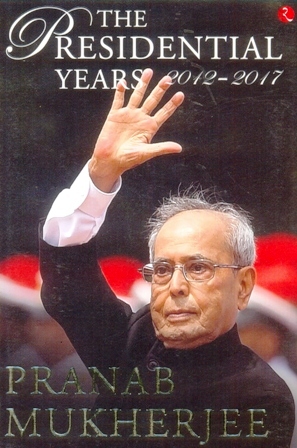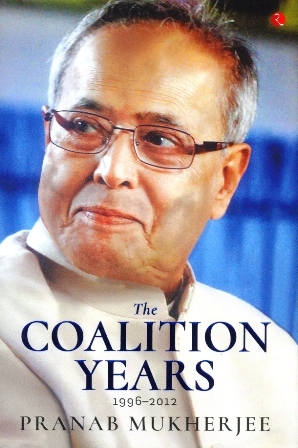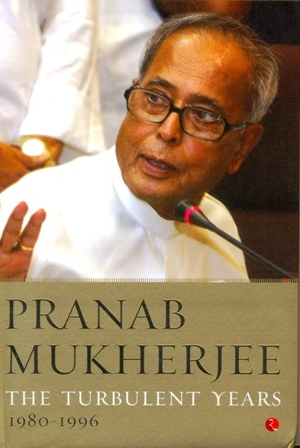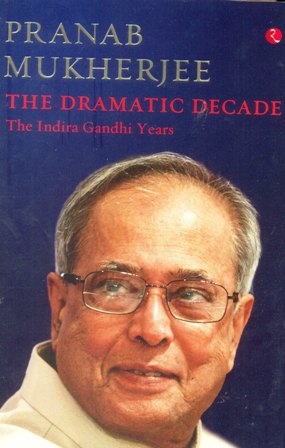-
The Presidential Years 2012-2017
The presidential years gives a fascinating account of how one of the country most respected veteran politicians reshaped the functioning of Rashtrapati Bhavan and responded to tumultuous events as the country first citizen, leaving behind a legacy that will be hard to match. Pranab Mukherjee became President of India after having spent several decades in politics, and there was great speculation over how he would approach his new bipartisan role after having been associated with a political party for so many years of his life. By the time he had served his Term, Mukherjee had won the respect and admiration of people from across the political spectrum, including those who were his rivals when he was a political figure. He had the occasion to work with two prime ministers, belonging to two parties who were (and are) fiercely opposed to each other, and he managed to do so with aplomb.
-
THE COALITION YEARS
The Coalition Years begins its journey in 1996 and explores the highs and lows that characterized sixteen years of one of the most tumultuous periods in the nation’s political history. It is an insightful account of the larger governance phenomenon in India—coalition politics—as seen through the eyes of one of the chief architects of the post-Congress era of Indian politics. From the inexplicable defeat of the Congress in the 1996 general elections and the rise of regional parties like the TDP and the TMC, to the compelling factors that forced the Congress to withdraw support to the I.K. Gujral government and the singular ability of Sonia Gandhi to forge an alliance with diverse political parties that enabled the Congress to lead the coalitions of UPA I and II, Pranab Mukherjee was a keen observer and an active participant in the contemporary developments that reshaped the course of the country’s political, economic and social destiny. Beyond the challenges, complications and compulsions of coalition governments, this book is also a recollection of Mukherjee’s journey as the Cabinet Minister in the key ministries of defence, external affairs and finance, beginning from 2004. He recounts each of these events with candour—the path-breaking meeting with Henry Kissinger in 2004 that altered the course of the Indo–US strategic partnership, his timely advice to Bangladesh Army Chief Moeen Ahmed in 2008 that led to the release of political prisoners there and the differing views with RBI Governor D. Subbarao on the structure of the FSDC. The third volume of Mukherjee’s autobiography is a sharp and candid account of his years at the helm. It offers the most authoritative account of
-
The Turbulent Years 1980-1996
A sharp insider's account of the many political and economic decisions that shaped the future of modern India The Turbulent Years opens in the 1980s. Sanjay Gandhi is dead under unexpected, tragic circumstances, not many years later, Indira Gandhi is assassinated, Rajiv Gandhi, 'the reluctant politician', abruptly becomes India's Prime Minister. Pranab Mukherjee was witness to (and, sometimes, a participant in) the momentous events of the 1980s and the 1990s, a period that was indisputably the most turbulent in India's post- Independence history. An insider, he sheds new light on every major political occurrence of the time - from Rajiv Gandhi's ascendance as India's Prime Minister to the emergence of P. V. Narasimha Rao as a leader of the nation, from Operation Blue Star to the Babri Masjid fiasco. Equally, Mukherjee is candid about each of the professional crises that marked this period of his career - the rumours that he wanted to elbow aside Rajiv Gandhi for the top post, the possible reasons for his ouster from Rajiv's Cabinet and later the party and the allegation that he aided and abetted the Left by not imposing President's rule in West Bengal and Tripura in the late 1980s. The second volume of Mukherjee's autobiography is not only an honest account of his years in power (And in the wilderness), but also a cogent analysis of the political and social turning points of a key period in the evolution of modern India.




